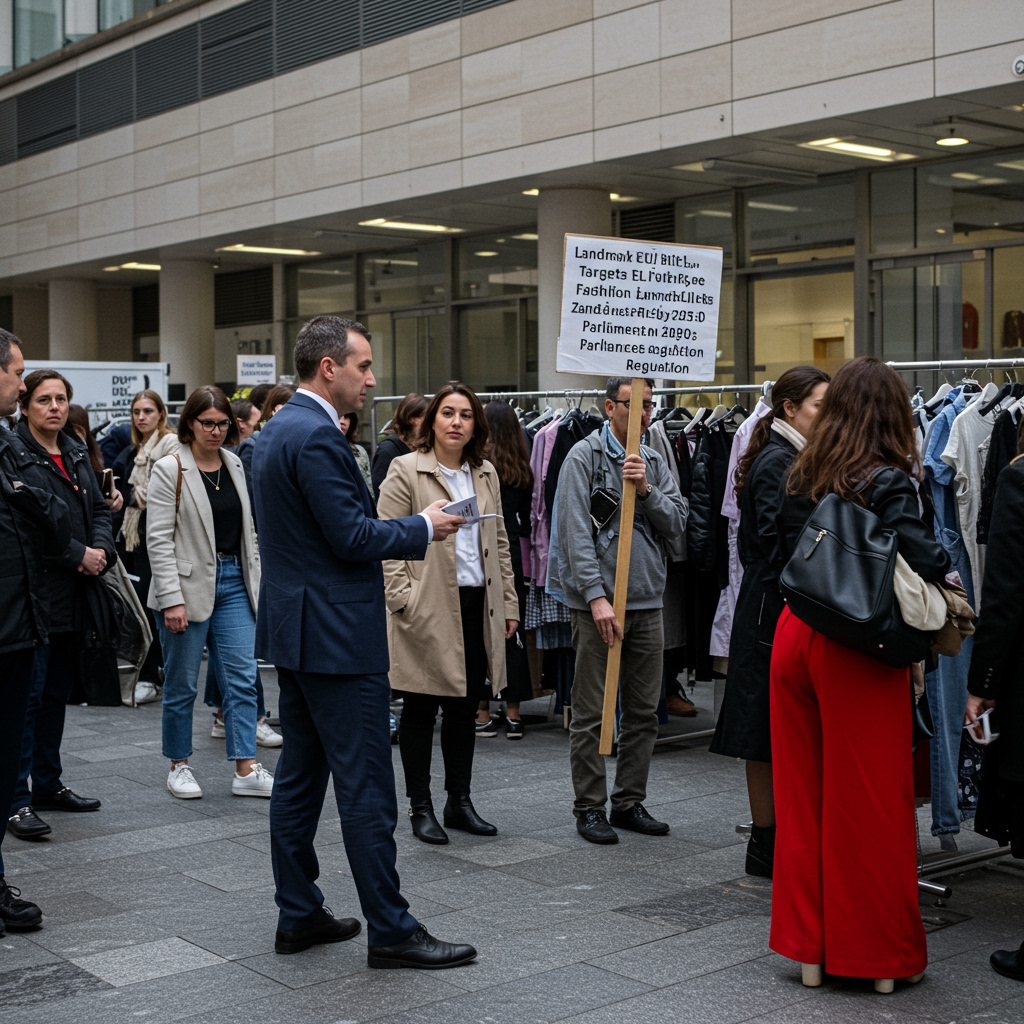EU Parliament Takes Decisive Action on Textile Waste
Strasbourg, France – In a significant legislative move, the European Parliament today took a crucial step forward by advancing the proposed Textile Waste Reduction Act. This landmark bill represents a direct assault on the mounting environmental crisis caused by the fashion industry’s waste, with the ambitious target of drastically cutting landfill waste from textiles across the European Union by the year 2030.
Addressing the Fast Fashion Challenge
The global fashion industry has long been scrutinized for its rapid production cycles and the enormous volume of textile waste it generates. Millions of tons of discarded clothing end up in landfills each year, contributing to pollution and resource depletion. Recognizing the urgency of this issue, the European Union has prioritized finding systemic solutions to transition towards a more circular textile economy. The bill advanced today is a cornerstone of this effort, aiming to shift the burden of managing textile waste from public authorities and consumers towards the producers themselves.
Origins and Core Mandates of the Act
The Proposed Textile Waste Reduction Act was initially introduced by the European Commission in early 2025 as part of a broader package of measures designed to implement the EU’s Circular Economy Action Plan. Its fundamental principle is the establishment of mandatory extended producer responsibility (EPR) schemes for textiles. Under these schemes, fashion brands and retailers operating within the EU’s 27 member states will be legally obligated to take responsibility for the end-of-life management of their products. This includes financing and organizing the collection, sorting, reuse, and recycling of textiles.
Beyond the EPR framework, the bill mandates significant investment in textile recycling infrastructure. Europe currently lacks the capacity to effectively process the vast quantities of textile waste into high-quality recycled fibers. The proposed legislation aims to stimulate the necessary investment in innovative sorting and recycling technologies, making large-scale textile-to-textile recycling economically viable and technologically feasible across the Union. This investment is seen as critical to closing the loop in the textile value chain.
Key Provisions and Targets
A central element of the Act is the inclusion of specific targets for recycled fiber content in new garments. While the exact percentages and timelines may still be subject to refinement during the legislative process, the intention is clear: to create a consistent market demand for recycled textiles and reduce the reliance on virgin raw materials. This provision is expected to drive innovation in recycling processes and encourage brands to design products that are easier to recycle.
Furthermore, the bill outlines clear penalties for non-compliance. Brands that fail to establish or adequately fund their EPR schemes, meet recycled content targets, or invest in required infrastructure could face significant fines. These penalties are designed to act as a strong deterrent and ensure that the legislation’s objectives are met consistently by all market players.
Impact on Global Retailers
The scope of the Proposed Textile Waste Reduction Act is far-reaching, impacting major global retailers with a significant presence across the EU’s 27 member states. Companies like Zara, H&M, and Shein, among many others operating within the European market, will need to fundamentally reassess their business models and supply chains to comply with the new regulations. This will involve setting up collection points, collaborating with recyclers, adjusting design practices for recyclability, and potentially restructuring their financial models to cover the costs associated with end-of-life management.
Experts anticipate that the legislation will necessitate substantial operational and financial adjustments for these companies, potentially leading to changes in production methods, material sourcing, and pricing strategies. The impact is expected to resonate throughout the global fashion supply chain, as major brands adapt to the stringent EU requirements.
Driven by Environmental Advocacy
This legislative push by the European Parliament follows widespread calls from environmental groups and civil society organizations that have long highlighted the fashion industry’s large environmental footprint. Organizations like Greenpeace and Fashion Revolution have been at the forefront of campaigns demanding greater accountability from brands for their environmental impact, including textile waste. Their advocacy has played a crucial role in raising public awareness and pressuring policymakers to take concrete action. The advancement of the Textile Waste Reduction Act is a testament to the growing momentum behind sustainable fashion and the increasing political will to regulate environmentally damaging practices within the industry.
Next Steps
With the bill now advanced by the Parliament, it will proceed through the remaining stages of the EU legislative process, including negotiations with the European Council. While the precise final text may undergo some modifications, the core principles of mandatory EPR, infrastructure investment, recycled content targets, and penalties are expected to remain central to the legislation as it moves towards final adoption. The vote today signals a strong commitment from the EU Parliament to tackling textile waste head-on and establishing Europe as a leader in sustainable fashion practices, setting a potential global precedent for how the industry manages its environmental impact.





